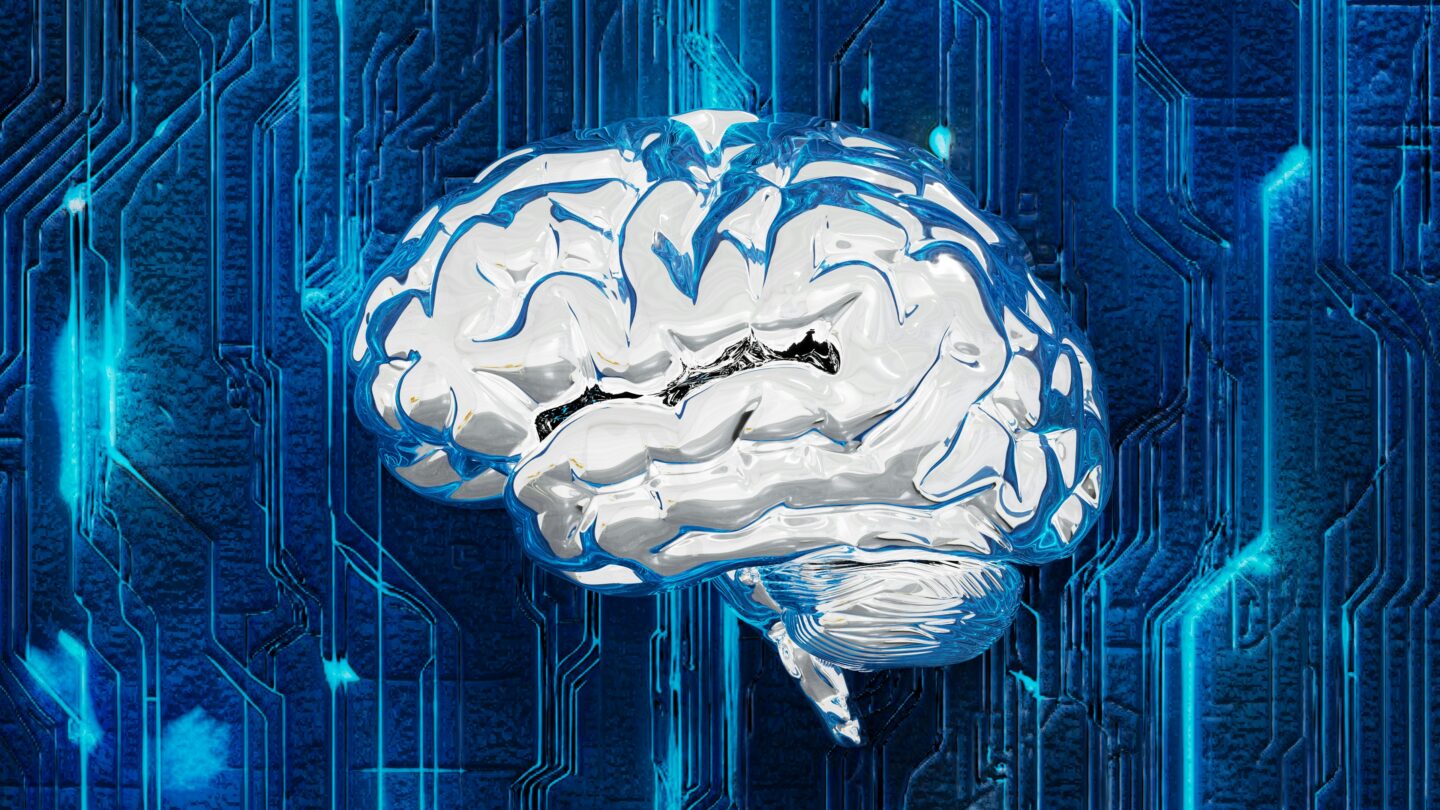
Buying your way into entrepreneurship: the dss+ journey
How a private equity-backed corporate carve-out created a successful, sustainable consulting powerhouse...

by Gopi Kallayil Published April 7, 2025 in Technology • 8 min read • 
Artificial Intelligence is perhaps the most far-reaching technology ever created. It could prove more significant than the advent of the printing press in 1440, electricity in 1762, and the automobile in 1886. AI has existed as a concept for decades, but now it’s coming of age. All of us can engage with it using everyday language, and the architecture and computer power exist to make it come alive. Its capabilities are still being built, and we’ve yet to see what humans will do with it. However, AI is so pervasive and rapidly growing that it will develop exponentially, profoundly altering nearly every field of human existence and changing how we live and work in ways we can’t imagine.
While we’re excited about the potential of AI, we understand that with advanced technologies come challenges, such as potential bias in algorithms, privacy violations, malicious use, job displacement, social manipulation, and the creation of uncontrollable AI systems. This means responsible development with robust oversight and ethical considerations is crucial. In 2018, Google published seven Principles of Responsible AI (see list at the end of the article) and appointed a governance team responsible for monitoring and reporting on compliance.
We want everyone working at Google and those who interact with us to understand that these are the core AI principles we follow and to be consistent with them, ensuring that AI is bold and responsible.
Let me demystify artificial intelligence. To do that, we must first look at a unique human capability: natural intelligence (NI). This involves learning from the past, responding to new situations, comprehending intricate ideas, creative thinking, emotional insight, and flexibility. It is the type of intelligence that created the ballpoint pen. It’s a simple instrument with elements – from the development of the forging process to communicating thoughts on tablets with rudimentary ink to the invention of the compression spring and plastic – that have taken thousands of years to develop.
Yet, for all the insights, breakthroughs, and capabilities our natural intelligence has brought us, it is a limited resource. For example, if your leadership team consists of five people, then that team possesses the intelligence of five people. But what if, with this same team of five, you could tap into the intelligence of 50 people? This is what AI is about and what computer scientists have been trying to do: mimic our natural intelligence in computer systems and amplify that capability, emphasizing the word amplify rather than replace.
AI systems not only amplify the capabilities of the human brain, but they also mimic different types of cognitive functions. Systems that mimic the right side of the brain (more intuitive and creative) are what we broadly refer to as generative AI, while systems that mimic the left side (more quantitative and analytical) are called analytical AI. Each system serves a different function, and each can complement the other.
Analytical AI explores existing data to understand patterns, make predictions, and gain insights. These systems perform complex calculations, analyze large datasets rapidly, and allow for systematic workflow problem-solving and optimization. By prioritizing objective analysis, analytical AI can identify patterns and trends, providing valuable insights that might otherwise be difficult for human analysts to detect.
Generative AI systems create new data. They use deep learning neural network models to generate new content that mimics human creation – images, text, music, programming code, and even entire pieces of artwork. A neural network is an AI method that teaches computers to process data in a way inspired by the human brain. These systems recognize patterns and understand and respond to human emotions. They adapt to unpredictable situations and generate innovative solutions to complex problems.
Just as the human brain integrates both hemispheres to function effectively, advanced AI systems are being developed to combine generative and analytical capabilities, allowing these integrated systems to manage a broader range of tasks with greater sophistication. For example, generative AI can enhance predictive analytics (a subset of analytic AI) by enriching data models and generating possible scenarios, improving the accuracy of forecasts.

“Just as the human brain integrates both hemispheres to function effectively, advanced AI systems are being developed to combine generative and analytical capabilities.”
Google declared itself an AI-first company in 2016. Our AI Strategy is underpinned by the belief that AI can inspire and empower people in many fields, including healthcare, security, energy, transportation, manufacturing, and entertainment. We’re helping three audiences – consumers, communities, and companies – to reach their highest potential with AI. Let me explain this strategy one audience at a time.
Consumers (i.e., the eight billion-plus humans on the planet) use various Google products to manage their lives. Seven Google products – Search, Gmail, Android, Chrome, Google Play, YouTube, and Maps – are each used by more than two billion people monthly. We’re asking: “How can we enhance the experience for consumers by using the power of AI across all of these products?”
Take one example: search. Historically, if you were searching, you had to navigate to a rectangular box on Google and type in words to find the information you were looking for, and you needed to be fairly precise. You had to know what you were looking for so that Google could help you find it. But that’s not how human curiosity works. We often look at something, become curious, point to it, and say: “What is it?” We can’t even describe it. The launch of Google’s Circle to Search feature on your smartphone means you can use intuitive gestures like circling, scribbling, highlighting, and tapping to learn about what’s on your screen without switching apps.
Access to education and healthcare, as well as climate change, are among many pressing societal problems. We’ve been asking at Google: “Can we use AI to solve any of these issues?”
For example, floods affect more people than any other environmental hazard. Flood-related disasters have more than doubled since 2000, with nearly 1.5 billion people exposed to significant risk annually. Upgrading early warning systems to make accurate and timely information accessible could save thousands of lives.
Engineers at Google asked: “Can we use AI to predict flooding and provide those who live in the area earlier notice?” Our team explored the potential of machine learning to create better flood forecasting models. They collaborated with academic researchers to combine the best hydrological physics-based flood simulations with our AI approach.
They built a flood prediction model where AI runs simulations to determine the millions of ways in which the river could behave, depending on the level of water, how fast rains flow, which embankment collapses, which tributary is swelling, and which dam has to release water because it’s at capacity. The AI-powered model runs simulations and can predict flooding, indicating the different combinations by which the river can behave. This would be difficult to do using traditional methods.
The team tested this system around the Ganges in India. Nearly half a billion people live nearby. During the monsoon season, the river will likely flood, affecting agricultural land, homes, and livestock. The people living in the area get one day’s evacuation notice, so the flooding causes a great deal of property damage.
The tests were a success, and now, during the Monsoon season, the system captures all this data and starts predicting: “The Ganges river will flood the town of Patna in the next five days,” and so on. That information is distributed to the local authorities and the general population through Google alerts and Google Maps, giving people time to evacuate. Google forecasting is now available in more than 100 countries. AI-powered, AI-generated, and AI-distributed – this is an example of AI benefiting the worldwide community.
Google enables organizations to use AI to work smarter, make better decisions, leverage powerful tools to streamline operations, gain deeper insights, bring innovative ideas to life faster, and build sustainable and successful businesses that continue to thrive and grow in an increasingly prosperous world.
This is best illustrated in the case study of Omoda, an innovative Dutch fashion retailer. The company had been undergoing extreme change due to the acceleration of online shopping, the variety of available payment methods, and the introduction of fast fashion, resulting in a return rate of up to 50% of the items sold. Omoda asked us: “Can we build an AI-based system to predict whether an order will be returned? And if so, how much of the order?” So, we built a model looking at historical data where we knew the items with a higher probability of being returned and new real-time data, which included variables like payment methods or order size. When an order came in, the system would combine historical and real-time data to get a prediction.
Omoda used the prediction to change its operating process model. The AI model successfully predicted returns for 70-75% of orders, reducing returns by 5% and increasing profit margins by 14%. The company plans to optimize the model further to reduce CO2 emissions and enhance personal sizing recommendations.

“You’ll need to be ahead of the curve, and then constantly look inside and outside your industry to learn how others are using AI.”
As you launch your business strategy, ask yourself the following: What is your plan for growth this year? What are the priorities and challenges? Then, most importantly: How can I use AI to enable the strategy?
To determine the AI capabilities that can enable the strategy, you’ll need:
1. An understanding of where AI is now and where it’s going. Be ahead of the curve, and then constantly look inside and outside your industry to learn how others are using AI.
2. A spirit of experimentation. It’s hard to predict what’s next because new developments and capabilities are always emerging. You want to get in early and continually try tiny experiments to see what succeeds.
3. Smart people who have AI skills and talent. If you don’t have those people internally, you can partner with external organizations that have AI capabilities. And this could be technology companies like Google and Microsoft or consulting firms like Accenture.
Whether it’s faster and more efficient access to information, flood forecasting, or finding financial and eco-friendly solutions for excessive product returns, the steps are the same: identify a problem, determine the desired outcome, and then ask how AI can provide a better solution.

Google's Chief Business Strategist for AI
Gopi Kallayil is Google’s Chief Business Strategist for AI. He works with Google’s largest customers to help transform their business through AI-powered marketing and improving the consumer experience. Gopi has spoken at TEDx, The World Happiness Summit, and Wisdom 2.0. His books, The Happy Human and The Internet to the Inner-net, are published by Hay House.

April 16, 2025 • by Benoit F. Leleux in Technology
How a private equity-backed corporate carve-out created a successful, sustainable consulting powerhouse...

April 10, 2025 • by Sander van der Linden in Technology
It’s possible to immunize people against false or manipulated information through simple exercises that policymakers and platforms could easily roll out....
 Audio available
Audio available
March 31, 2025 • by Michael Yaziji in Technology
AI carries the threat of bringing to life the chilling visions of Orwell and Huxley. We must work hard to fight against the convergence of micro-surveillance and digital inertia....
 Audio available
Audio available
March 27, 2025 • by Robert Earle, Karl Schmedders in Technology
Subsidies for renewables have led to electricity prices frequently falling to less than zero, creating opportunities for consumers....
Explore first person business intelligence from top minds curated for a global executive audience